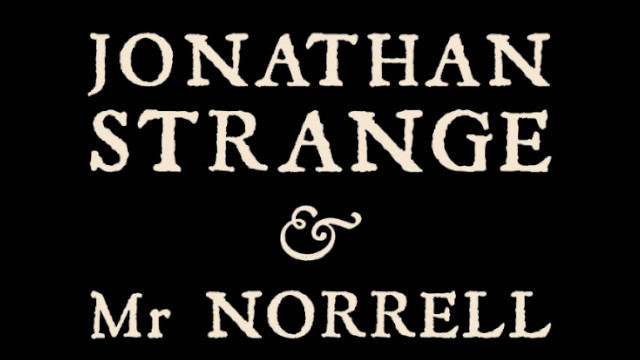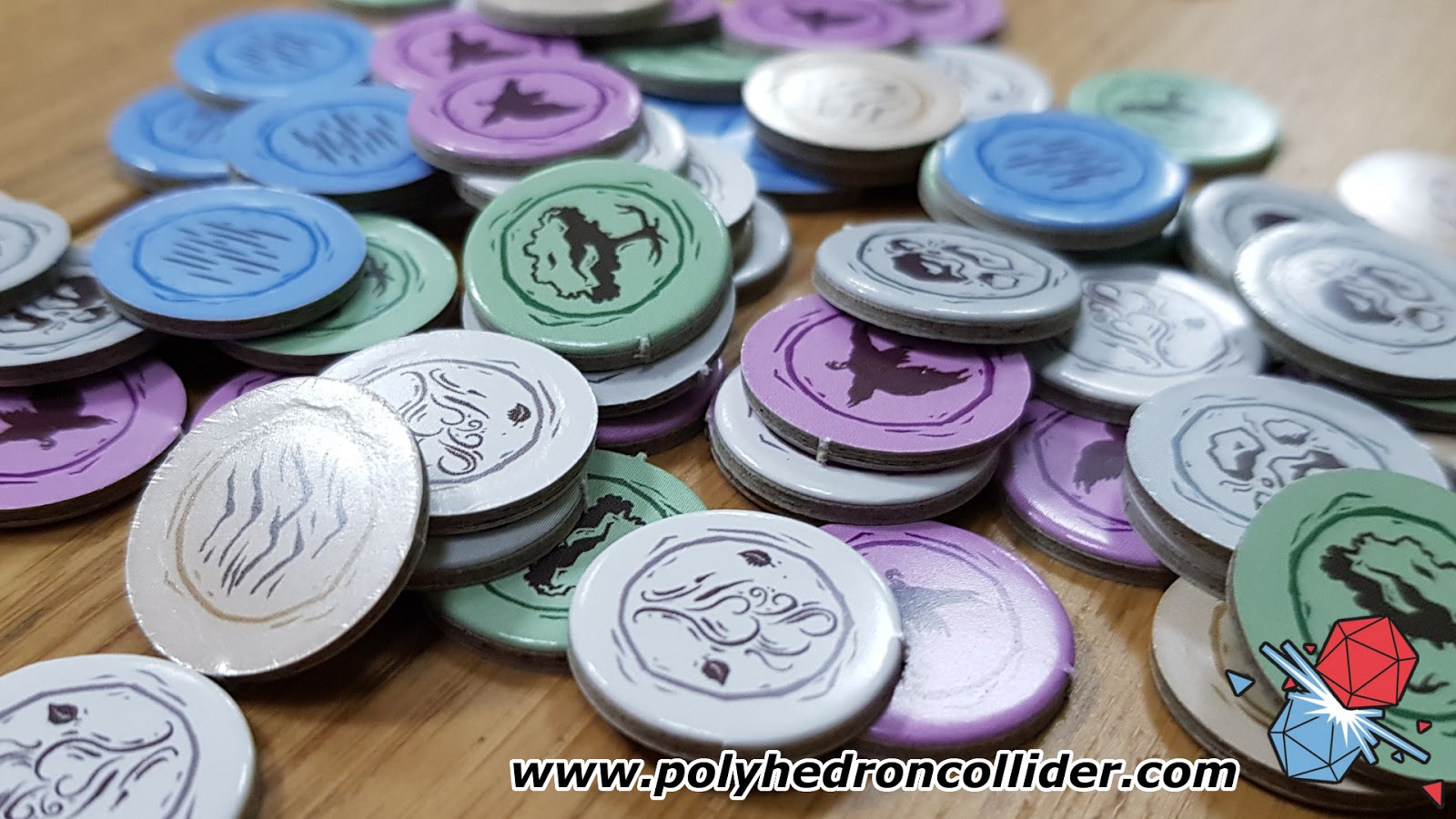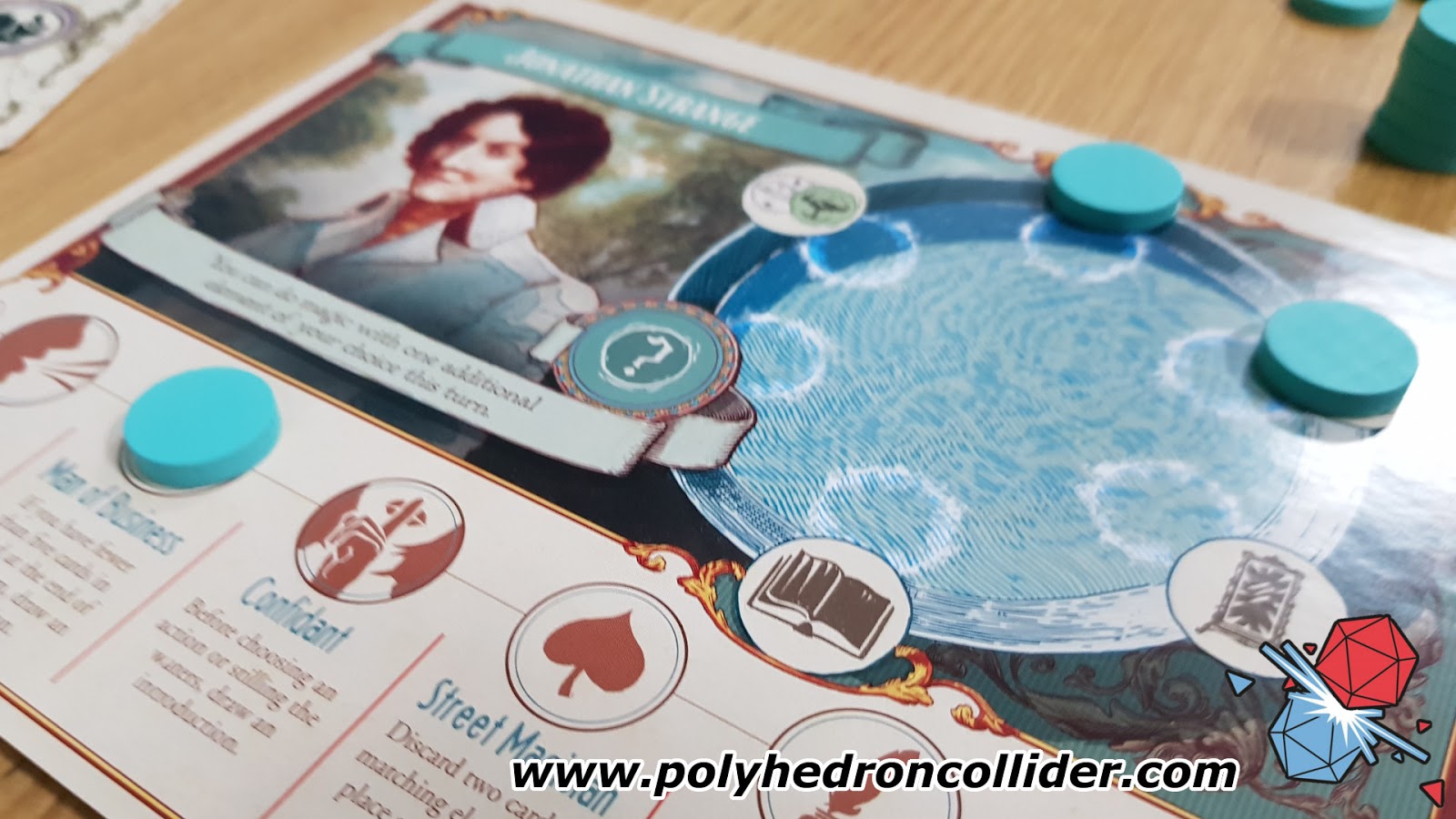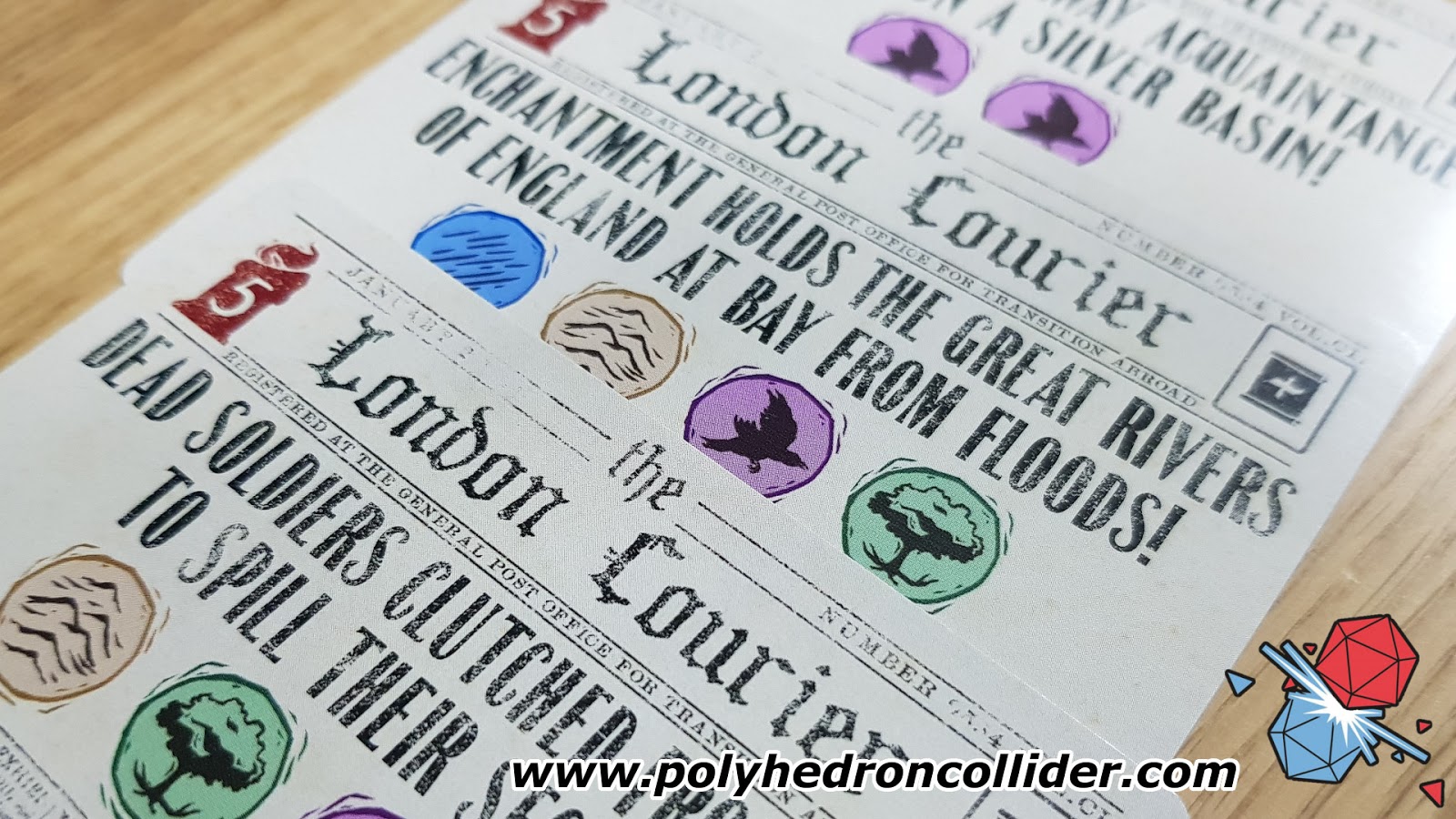Jonathan Strange and Mr Norrell a Board Game of English Magic is somewhat of an enigma, a puzzle, not simply in terms of what you, as players, do in the game itself to thwart the Gentleman with the Thistle Down Hair, but rather, given its ...pedigree...how it ballsed it all up so magnificently.
As a fan of the book I was excited to explore 18th century Europe as a gentleman magician, to attend balls, dinners, galas, hobnobbing with the rich, famous and elite of the time. I was intrigued as to how I was going to learn magic, search out and explore these mysterious tomes of spells. I was anxious about interacting with the myriad of finely nuanced characters found in the source material and how those complicated relationships would transpose into player interaction and events or actions.
And then there are the spells themselves. Just how do I create a phantom English Armada? Move an entire forest, or town or make a river flow the opposite direction? Yes, I was very, very excited to play Jonathan Strange and Mr Norrell. Very excited indeed.
Alas, excitement and disappointment are familiar bedfellows (at least it seems as such for me when it comes to much-loved books and board game implementations).
Your goal is simple, exceed the Fairy’s power by your own Magicianship on any one of the 4 specific turns of the game (turns 6, 8, 10 and 12), fail to do this and everyone loses. If you do manage to accomplish this task (and good luck with that) you end the game immediately and the player with the highest Magicianship wins (note, there are no extra points for thwarting the fairy). You gain Magicianship by completing ‘Feats of Magic’, to do that you need to collect an assortment of spell element tokens and to collect tokens you need to discard your ‘Social Engagement’ cards to gain tokens instead of the cards ability.
These cards form the crux of your choices (or lack thereof) and actions (or lack thereof) each turn; introductions—hobnobbing cards that will gain you near-pointless Prestige—and Invitations—that will enable you to gain more Introductions or gain additional Feats of Magic. To accomplish either of these cards all you need to do is go to the location of said Social Engagement (with your invitation or personality card) and hey presto.
On top of these pretty linear set of actions there is a thick crumbly layer of complication. On top of which is a rich creamy sauce intricacy followed, finally, by a dollop of frustration and sprinkled in irritation.
As we discussed on Polyhedron Collider Cast episode 65 Jonathan Strange and Mr Norrell is more like a puzzle than it is a game, and perhaps you could say it is a series of smaller puzzles that make up a bigger one. Unfortunately, not only are the smaller puzzles not particularly interesting but the overall effect is frustratingly complicated and inexplicably random with little player agency or ability to mitigate or plan.
If you’ve not listened to the podcast, however, the major thorn in this games side can be firmly attributed to one deck of cards that preside over and orchestrate the pace and futility of the game: The Cards of Marseilles.
These tarot style cards provide key information for the game. They dictate how many invitations the players will receive at the end of their turn, how much power the fairy grows by and most importantly they dictate (read: limit, or better yet, constrict, or massively reduce) the element/s that can be gained that turn. This limitation means that for you to be able to advance through the game you need to have the following things at the same time.
• Have cards in your hand (that you don’t need for something else) with matching elemental symbols.
• Have a feat of Magic that requires those same elements.
I have found, without exception that this is rarely the case.
Now, there are means of slightly mitigating which elements can be gained by the use of the silver basin player board, but this mitigation is too little, too late and is too costly - as you can only make one mitigation of a pair of elements once, until spending a future action to clear all the used spaces. The limitations imposed by the Cards of Marseilles means you can rarely do what you want to do, when you need to, how you want to.
And because you can’t do anything; you do nothing.
And that is only half of it. Being unable to make use of both “social actions” is frustrating (more so if you consider that one of these is also equal to 50% of your total possible), likewise with movement. In playing this game I was very aware that every player, on multiple occasions in their game would essentially end up rambling through Europe, opting to “just move there” because a moment before they had declared “Well, I can’t really do anything.” On the face of it there is loads of player agency, loads of choices, but that’s misdirection. Chances are you are playing this game hand to mouth each turn, trying to get to here so you can do this one thing and then maybe collect some elements. If you can.
Without a way to foresee, plan, or to adequately mitigate the circumstances of a turn you’ll discover very quickly that you accomplish nothing and all the while that bastard fairy is getting more powerful. Which brings us to what is probably my greatest disappointment with a Board Game of English Magic. It doesn’t feel like magic. It doesn’t feel like the scramble to uncover books of magic. The game doesn’t ring with back stabbing and trickery, of subtle plots of revenge and deceit. The Gentleman with Thistle Down Hair is a score tracker to exceed, not a one-thousand-page climatic foe to vanquish, just a little black wooden token on a track.
A note should be made about the fantastic artwork and overall production value of the game, Ian O’Toole’s illustrations really stands out on the table and teases the theme out of the game which otherwise repeatedly misses the mark despite the incredibly rich world created by Clarke.
I have endured playing Jonathan Strange and Mr Norrell, on more than one play through the gathered players got about halfway through the game before we started having a chat about something completely different, the qualities of a good stag do, trying to remember the name of Jonathan Creek’s actual occupation (I still contest it is “ingenieur”,based on the great book ‘The Prestige’ by Christopher Priest) . In some ways playing Jonathan Strange and Mr Norrell is a little bit magical, how, despite your best efforts the game distracts and bends your attention away from itself, tricking you into not playing a board game. In that regard, Jonathan Strange and Mr Norrell is singularly spectacular.
N.B I know that a “patch” has been released by the designers on Board Game Geek to resolve the runaway Fairy issue. We’ve not played this as our aim is to play the game as it is out of the box and this variant is neither final nor official as yet.
And there is also another suggestion on reducing the downtime and turn orders there too (or you could just have a chat about something else such as:
How much product does Jon put in his hair?
Does Andy actual have a problem with compulsively backing Kickstarters?
Is Steve always grumpy?
If the members of Polyhedron Collider were Teenage Mutant Ninja Turtles, who would be whom?
This review is based on a full retail copy of the game provided by the publisher.

















.png)



0 comments:
Post a Comment